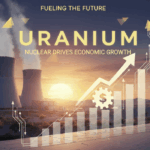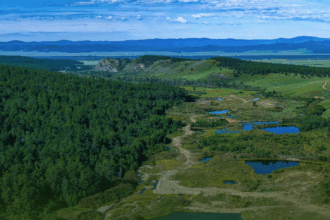Mongolians have spent decades talking about developing our economy by implementing zones and regions and reducing the pace of centralization. A lot of discussion was had and many decisions were taken at government level. However, we haven’t seen much success so far, as half of our entire population reside in one city. In addition, Mongolia is ranked in the last place out of 63 countries along with Venezuela in terms of economic competitiveness.
Mongolia is the 19th largest country by area in the world and has a population of only three million. At the same time, our countryside is largely empty and the capital city is overpopulated while one third of our population are suffering from hunger and one fourth are living in a home with outside toilets.
Our government has been eaten away by corruption and our people have been politicizing everything, taking sides, and getting involved in all kinds of rows and debates. All that instead of doing work and creating value. Why are we prioritizing how things look rather than what they actually mean?
Undelivered promises on regional development
As the new millennium came, the parliament of Mongolia ratified a Regional Development Strategy that included a concept of zonal development in 2001, passed a law on the management and regulations of regional development in 2003, and a comprehensive national development strategy in 2007. But this policy as well as the laws never found their way into reality because Mongolia deviated from the principles of a free market economy, let the government to have too much involvement in the economy, allowed the law to be unequal in its application, and didn’t stop public governance serving a small group of individuals rather than defending public interests.
These policy documents acknowledge that the economic independence of aimags, soums, and baghs cannot be sustained with their own resources and that it would also be inefficient to distribute the public budget to this many units in the country. Therefore, they determined that regional and zonal development should be pursued. It was proposed to establish four economic zones (Western, Khangai, Central, and Eastern zones) and to develop Ulaanbaatar as an independent zone.
The purpose of zonal development, as set out in the policy document, is to resolve the unbalanced over-centralization of population and industries in the capital city, reduce the gap between urban and rural areas, accelerate socio-economic development at national level, and create favorable external conditions by ensuring that our resources including land, natural resources, agriculture, and human capital are used efficiently and in a manner that does not put constraints on environmental capacity.
However, we have now seen that none of these objectives have been accomplished 20 years later. There is a unique trend set in our country today that political parties come to power after setting out desirable outcomes in fancy words and calling it their action plan, which never comes to life because the next government replaces it with their own story when no results have been achieved.
The attempt at regional development has completely failed, and the only thing that has happened under this framework is that governors of a few aimags met once or twice a year and shared their frustrations as a ‘Regional development Council’ group.
Spatial economics
A lot of work has been done by scholars and experts around the world who have been proposing recommendations on regional economic development. Internationally, the discussion is around economic geography, clustering, value chain, urban development, and even a new term ‘spatial economics’, which reflects the latest advancements in this area.
It is set out that the purpose of regional development at national level lies not in making sure the land is occupied, but in ensuring spatial and resource measures are in place to assess whether the region is favorable to living and doing business there. What would come next is estimating the required infrastructure to support socio-economic development, reorganize administrational structure, and revise prioritization.
What it means is that we need to conduct the right spatial planning that fits what the region has and needs in terms of resources and unique attributes. This way, economic diversification based on market factors can be achieved rather than pushing blindly to do the same thing to every region.
This time Mongolia should devise a regional development policy that would create three or four large, competitive centers with the top priority to make these regions a place where people would feel satisfied with the overall quality of life and the services they receive in health, culture, and education. We should integrate soums that currently have overly small populations, establish one of the aimag centers as the regional center, and legalize the change in status of centers, regions, aimags, soums, and the capital city along with its districts.
Every region should have a suitable economic connection to the local economies of our two neighbors, connect to a vertical corridor by road, and have access to border ports. We need to enable our private sector to supply the products they have produced using in-country resources and advanced technology to both domestic and international markets. For example, we should support building a facility to supply and process livestock raw materials near a regional center. We also need to do what Canada does and introduce a system that allows a certain portion of mining royalties to stay in the local area and even enables non-mining communities to receive a share.
We need to connect the Western and Khangai regions with highways as well as railway, and build a number of universities, colleges, hospitals, arts centers, and sports facilities. The locations should enable establishing of economic centers and factory complexes that fit the needs and requirements of that region.
Furthermore, these regions should have their own tax system and allow for greater potential for salary increases, softer taxes, and investment incentives compared to the central system. This is when the regional development efforts would have yielded its benefits, as shown by Mongolia’s experiences.
Given Mongolia has deep roots in traditional animal husbandry historically, the purpose of our regional development policy should lie in allowing pasture ownership at bagh level, introducing tax on livestock headcount, improve livestock productivity, and enable production based on modern, innovative technologies. Only through cooperatives, would herders be able to maintain the health of their livestock, prevent animal diseases, increase business value, and conduct more profitable businesses. Herder cooperatives are not exclusive to herders, but would include experts and specialists.
We need to give greater freedom and power to our local communities at bagh and soum levels to act and work for themselves.
2018.05.30
Trans. by B.Amar












